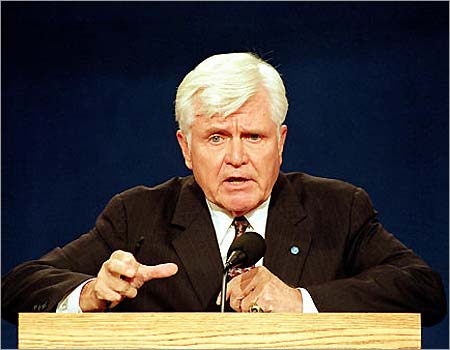
Today’s seemingly unrelated superfluous pop culture reference: Saw Fight Club for the first time over the weekend.
Why is this tied in, you ask?
Taking cell phone usage into the great beyond, the European Union apparently is close to allowing cell phone usage during flights, once the plane hits 10,000 feet.
There has been some noise about this in the U.S., but the Federal Aviation Adminstration and the Federal Communications Commission keep saying that there is evidence that wireless phones interfere with airliner instruments.
Is this a step toward worldwide use of such devices with your seat back in the relaxed position? Me hopes not.
First, on the technology side – given that most of Europe is on the GSM standard, this makes sense. And I have no problem if someone were to use their device (especially 3G enabled) for Web browsing, e-mail, etc. But why not do it as other airlines have been trying: create one collection point for Wi-Fi in the cabin with 3G backhaul to the ground towers?
Has anyone been on a plane with such a set-up? There have been some trials and courting between the airlines, aircraft maker Boeing and its creation Connexion, a firm trying to creat such a service. If you wanted to talk, couldn’t you just fire up your Skype or other IP phone in the process?
Why? Because it leads me to …
Second, the social ramifications of this are huge. Imagine sitting on the red-eye cross country … next to Paris Hilton and her Sidekick. Or a businessman trying to close a deal, when all you want is to close your eyes for a few.
Sure there are these objects of my device lust that block noise and increase fidelity, but you get the idea. Just had an interesting conversation with my wife about cell etiquette – and how you shouldn’t leave your cell out on the table at a restaurant: it shows you think the call is more important than you.
But once you allow someone to turn on their phone/device for data, how are you going to regulate/police them from talking on it? If I can flip open my laptop and get a Wi-Fi signal, you better believe I’m going to fire up my IP phone and talk to someone if I need to.

All I know is that I wouldn’t want to sit next to me on an airplane were cell phones allowed to be used.
Now, for the reference to “Fight Club” (based on a 1996 novel by Chuck Palahniuk) … To a certain degree, Tyler Durden (the Brad Pitt character) was right: technology has led to a deevolution of other sorts, especially in our interactions with each other.
In his words: “Tell him the liberator who destroyed my property has realigned my perception. “
There are several scenes in airplanes, including a bit about replacing the instructions-in-case-of-an-emergency” card with something a bit more realistic, if fatalistic.
And two all-time classic quotes for those who travel:
“Now, a question of etiquette – as I pass, do I give you the ass or the crotch?”
“You wake up at Seatac, SFO, LAX. You wake up at O’Hare, Dallas-Fort Worth, BWI. Pacific, mountain, central. Lose an hour, gain an hour. This is your life, and it’s ending one minute at a time. You wake up at Air Harbor International. If you wake up at a different time, in a different place, could you wake up as a different person?”
My thoughts on the whole possible FAA/FCC ban isn’t that it interferes with on-board influences. It’s the same reason many devices that have no such properties are banned during takeoff – they interfere with hearing the instructions of the flight attendants. Which of course are to take the oxygen that Tyler from Fight Club says is just to make us high to accept our fate, and to put our heads between our legs – so we can kiss our derriere goodbye.
Allowing people, strike that, a person wanting to have one-sided conversations in a silver tube streaking along at 450 mph at 30,000 feet sounds a little desperate to me.
Now, I’ve gotta go – I’m smoking a turkey (on the grill of course).








